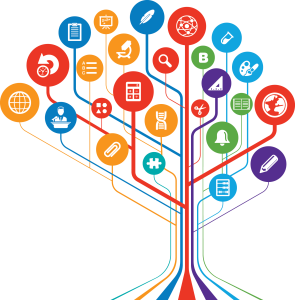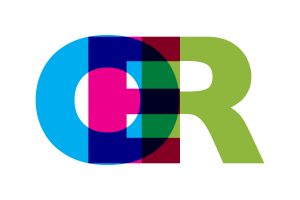6 Summary/ Conclusion
Feedback from a Learning Circle Participant:
Working on an OER project is more than just authoring, modifying a D2L course, and creating ancillary materials, is it a great learning opportunity for personal and professional development.
Fall 2022
Hector (Giovanni) Antunez
Lessons Learned
Barriers to OER adoption, redesign, and authoring.
Before I close I want to visit again the results from my research that drove the way I designed this process. My research showed that teachers need time, compensation, and administrative support to successfully transfer knowledge acquired in teacher training programs to application in their classrooms. I addressed these same barriers when designing the OER Learning Circle Process for engaging faculty in OER adoption.
 |
| Barriers by Nick Youngson CC BY-SA 3.0 Pix4free.org |
Traditionally these barriers have existed because they are an inherent piece of the organizational structure of American educational institutions. Teachers are provided very few paid hours to do course preparation and those few hours that are allotted are being eaten up by committee work, or administrative work filtered down to instructors because of budget cuts. Instructors are torn between a need to preserve their employment by taking on additional institutional duties and the professional integrity of teaching, class preparation and obligations to students needs and success.
How does this impact an organization?
This also has an organizational and a social justice impact that is far reaching. It begins to erode the institutional morale and the result is institutional fatigue where taking on any new enterprise just seems too overwhelming and leads to decisions to just keep doing the same old things that have traditionally worked, regardless of the costs.
In the case of the adoption of open educational resources what that means is that instructors just do not have the time, the energy, or the mind set to become involved in looking at or understanding the value of OER. This results in higher costs for students and for learning institutions. It can also mean lost opportunities for instructors to create exemplary courses for their students, a stifling of creative teaching, and lost opportunities for open pedagogy and active student involvement in their learning. The opportunity for instructors and learners to engage in the collaborative construction of learning materials; (creating renewable assignments verses the continued use of disposable assignments).
 |
| ‘Overcoming Barriers,’ image from Wikimedia Commons, Licensed CC BY SA 4.0 |
How can we remove these barriers?
Increase Knowledge and Awareness of OER
- Provide the means for faculty to understand what OER are, and opportunities for them to see and experience the quality of OER. Explain the academic freedom that OER give to faculty to create curriculum that matches their course objectives, their teaching style and their teaching philosophy. The academic freedom to create content that is diverse and relevant to their learners, and reflects and contains the diverse and authentic voices of their learners.
 |
| ‘OER’ image from Inmaricopa, Licensed Personal Use. |
Understand that there is a Paradigm shift involved in OER adoption
- Stages of paradigm shift
- o Realization that OER exist
- o Recognition of the academic freedom OER provide
- o Interest in looking for resources for their classes
- o Collaborative conversations with colleagues about the use of OER, the challenges in adopting OER and the rewards involved in the adoption of OER.
Provide a safe, welcoming, supportive, active, creative, and respectful working/learning environment
- Support
- System Support
- Administrative Support
- Librarian Support
- Bookstore Support
- Support for other faculty
- Provide time to work, opportunity for cross disciplinary collaboration, revision, reflection, creation of plans, goals and objectives.
- Facilitated Learning Circles
- D2L course room
- Showcase event
- Pay it Forward Guide/ Reflections
Our current OER work at Central Lakes College builds on the work we were able to accomplish because of the system level grant our college was awarded in 2016. Our added goals of creating a” Z Degree” and a “Print on Demand” process for our faculty and students enabled them to have copies of OER materials printed very inexpensively and allowed for students to have access to their course resources on day one of class and …forever.[1]
Institutions must think creatively about how to initially fund an OER initiative. It is important to have the process that is created by faculty and librarians and is driven by them with support from administration and a institutional OER steering committee. Its is also important to secure funds to pay faculty some type of stipend for their work.
OER Learning Circles and Concurrent Enrollment Collaboration
I also served as the OER coordinator for an additional grant that the Central Lakes College Dean of Enrollment and Student Success, Paul Preimesberger, applied for and was awarded. This was a grant to promote the adoption of OER by our Concurrent Enrollment High School teachers.[2]
 |
| ‘OER Logo,’ Used in the Logo for OER Conference September 2013, from Wikimedia, Licensed CC BY-SA 3.0 |
The Learning Circle framework that we applied to OER concurrent enrollment project was the same as the framework we had been using in our Central Lakes College Learning Circles.[3] Our goal for this project was to facilitate collaborations between our high school instructors and our college instructors to develop OER for use in their concurrent enrollment courses. Five times over the course of a semester we hosted a OER Learning Circle at Central Lakes College. Each Learning Circle was about three hours in length and began with a provided lunch. Over lunch we shared updates to the project and shared “Pearls”, those Aha moments, successes, or challenges that each of us was experiencing as we worked on our projects. As the facilitator I led discussions that focused on assessment, learning course outcomes, content and delivery modalities. Project culminated with a “Findings Summit”. Principals and superintendents from each of the participating high schools and districts were invited to attend.
Low cost print versions of the OER being curated or created contributed to group’s enthusiasm for OER. Through the grant we were able to purchase a binding machine. We worked with our Graphics Art department to create a “Printshop which then provided opportunity to faculty, the high schools, and the college to order very inexpensive hard copies of the OER that the faculty were adopting. Some high schools save thousands of dollars ordering entire classroom sets of the newly created/curated resources through the Central Lakes College Printshop. Being able to print “pilot copies” of the resources being created gave faculty the opportunity to pilot their OER during the Learning Circle time frame in their current classes and make edits based on learner feedback and instructor reflection. Every faculty that attended the Concurrent Enrollment OER Learning Circles adopted and used the resources they created in the courses the following academic year. The original project continued over a four year period extending to include close to 20 participants.
Now in 2023 we have scaled this institutional model up to the system level and are including our first concurrent enrollment college and high school faculty in our Minnesota State semester OER Faculty Development Learning Circles.
OER Learning Circle Model Scaled to the System Level
As the OER Faculty Development Coordinator for Minnesota State, we have scaled this same Learning Circle Process to the system level. This fall we are offering second round of OER Faculty Development Learning Circle opportunities across our system for individual faculty to design their courses for the use of OER in that course, or author ancillary materials for existing OER.
Spring 2018, in our first scaled up session, we had 26 faculty from 16 colleges and universities attend OER Learning Circles. Included in those participants were four teams of faculty from two or more different institutions who collaborated to author OER textbooks for their disciplines in our systems completed guided pathways. We are currently holding our 15th Minnesota State System Level Learning Circle and have 31 participants from across our Minnesota State System. The popularity and success of this model continues to grow and support our faculty as they move forward with the adoption and creation of OER and enjoy cross institutional, cross disciplinary collaborative professional development opportunities.[4]
Please feel free to connect with me if you have any questions!
Karen
- Central Lakes College. (n.d.). Zero or Low Textbook Cost Classes at CLC. Brainerd, Minnesota. From https://www.clcmn.edu/z-degree/ ↵
- Perrine, J. (2016, Feb. 1).CLC receives $25,000 OER grant. Campus News. From https://www.clcmn.edu/news/2016/02/01/clc-receives-25000-oer-grant/ ↵
- Minnesota State. (n.d.). Open Education Network. From https://open.umn.edu/oen/ ↵
- Pikula, K. (Dec. 14, 2020). Minnesota State OER Faculty Development Learning Circles. From https://www.mass.edu/strategic/documents/2020-12-14%20OER%20Learning%20Circle%20Model%20Presentation.pptx ↵
The acronym OER stands by "Open Educational Resources"
The term refers to a fundamental change in approach or underlying assumptions.
